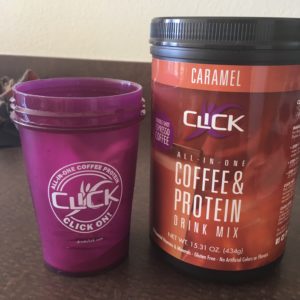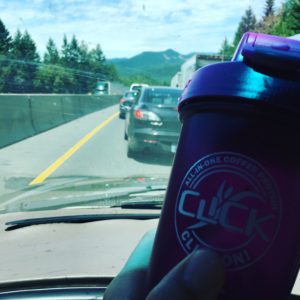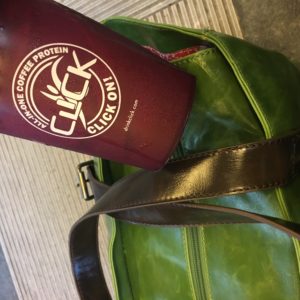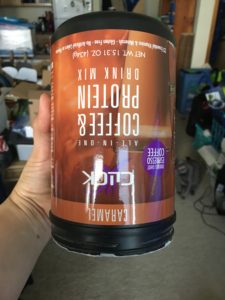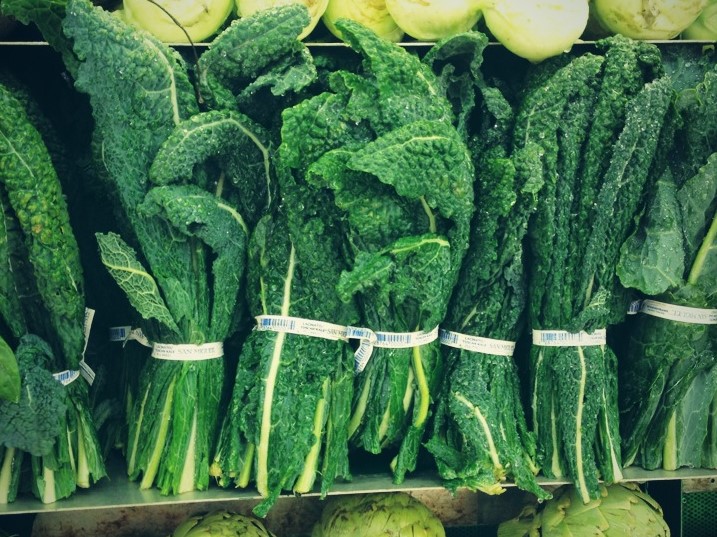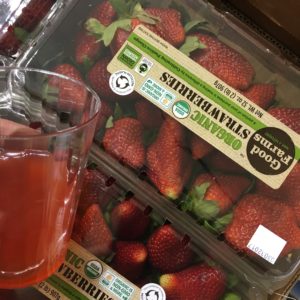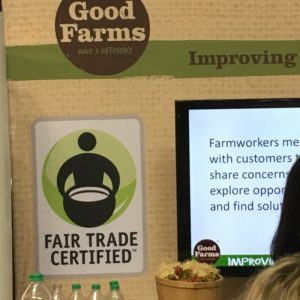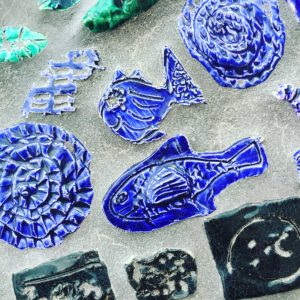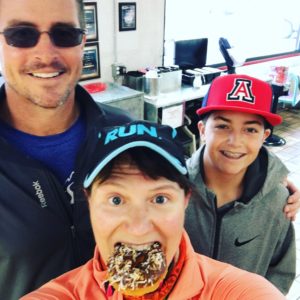SAVE YOUR MONEY, SAVE YOUR MIND!
First there was Black Friday, allegedly named because it is the first day of the Christmas shopping season and when retailers’ books go from red to black. (This was eventually ruined by the appearance of Christmas stuff on store shelves in September.) Then there was Cyber Monday, when Amazon and all the other .coms of the world offer deals to relieve you of whatever money you didn’t spent on Black Friday. As Wal-mart began to displace the beloved “mom and pop” stores that were on mainstreets in towns across America, and people realized where you spend money has a direct impact on what your world looks like, the “Shop Small” and “Shop Local” movements brought us Small Business Saturday. Sure, I appreciate the season-of-buying as well as the sales, but a ton of this spending is mindless.
Then came #GivingTuesday. I personally have plenty. I’m thankful. I’m spending some of my time going through all the things I moved and parting with the things that could help someone else, but are not really serving me. (I did a lot of this before I moved too–I even gave away a big carton of books!) With the advent of Kondo-izing and Swedish death cleaning, I hope you and your family have all of the stuff you actually need and maybe you are even living with an eye towards not acquiring more stuff you don’t. Sure, things wear out and need to be replaced, and new gadgets come out that are critical (or at least useful). It’s not like clothes now last forever or shopping is over. But let’s be thankful. For me, part of being thankful is giving back to others who are not so fortunate. I’m really lucky to work in an office that supports all kinds of community involvement. I’ve barely been here half a year, and we have fundraised for a Race for the Cure team, donated hundreds of new or gently-used coats and warm clothing to homeless teen services in Seattle, given to Hoop Camp for the developmentally disabled, contributed to Lawyers Against Hunger, supported the Campaign for Equal Justice, and more.
NOTE! IMPORTANT SAFETY TIP! Before you give, make sure the organization is what it says it is, and that it will use your money responsibly. Check out Charity Navigator, or GuideStar for more information.
If you have what you truly need, I invite you to consider giving money to an organization that is helping to make your world a better place. Last year I solicited suggestions from my friends. This year, here are my own top choices.
Encourage your friends to give this #GivingTuesdayClick To TweetSAVE THE NATION!
I couldn’t decide on the best way to organize my favorites so these are in no particular order (not alphabetical, not by how much I value the work they do, just randomly there).
Southern Poverty Law Center. It’s not just about the south. Their slogan is “Fighting Hate. Teaching Tolerance. Seeking Justice.” The SPLC documents hate crimes, provides legal services, develops educational materials for children and adults, and monitors news outlets for stories about discrimination based on race, gender (including gender identity), sexual orientation, and economic status. SPLC News This Week is a weekly email covering these topics. On Giving Tuesday, a generous donor has pledged to match the first $300,000 of donations, through midnight. For a limited time, donors who give $50 or more can send a special card about SPLC’s work to an honoree. If you select this option, may I suggest sending the card to a government official? http://www.splcenter.org
Electronic Frontier Foundation. EFF works to protect the rights of everyone on the electronic frontier through technology, activism, and legal action (also called “impact litigation”). Some of EFF’s projects this year including suing the Department of Homeland Security to challenge the escalation of warrantless device searches at the U.S. Border, fighting NSA surveillance programs and forcing disclosure of signficant documentation about mass spying (ON US, the US CITIZENS!), blocking invasive web trackers through the Privacy Badger browser extension, addressing the growing power social media companies have on speech through the OnlineCensorship.org website, and so much more. (Why yes, I did just crib that from the email asking me to renew my membership!) Like NPR, you can choose a free gift at some levels of membership, and members received discounts on EFF events and merchandise. EFF is a 501(c)(3) nonprofit. http://www.eff.org
College/University/School. Pick one. The cost of higher education–and that includes trade schools–has gone through the roof. There’s no reason why only rich kids should get to have a post-high-school education. The pre-K to grade 12 schools aren’t exactly well-funded either. Create a scholarship, donate to a department, sponsor a club, or find some other way to help keep education accessible to all who desire it.
ACT LOCALLY!
For every group I know about and have listed below, I am certain there is a similar group where you live. National charities are great, and sometimes being national in scope is the best way and most efficient way to accomplish goals. (We don’t need every city to have an EFF, for example.) Other times, smaller organizations can accomplish tasks more efficiently than larger ones, or a local organization can better serve the population where it operates.
The Lawyers’ Campaign for Equal Justice. CEJ funds Legal Aid, which provides civil legal services to low-income and elderly Oregonians. Legal Aid tends to the basics and can be the difference between life and death, or safety and homelessness. CEJ funds help people fight illegal evictions, secure safe housing, get access to medical services, and escape domestic violence. You can read some of the success stories on the CEJ website. (Regardless of what you think of lawyers, those who work for Legal Aid do some of the most difficult work for some of the lowest pay. Without CEJ, Oregon’s Legal Aid program wouldn’t exist.) Poverty in Oregon is on the rise, and the demand for legal services is too. http://www.cej-oregon.org/
East Bay SPCA. Yes, I now live in Oregon, but East Bay SPCA is the group that united me with my current kitty-love, Professor Nick Sterling. The Professor started his life in another shelter, where he was adopted. At some point things went sour, however, and eight years later he was rescued from a hoarding situation and returned to that same shelter. After languishing there several months, the East Bay SPCA identified him as a cat they might have a better chance of re-homing and took him in to their Oakland shelter. Poor kittyboy was there for months before we found each other. In 2016 (when Nick and I got together), East Bay SPCA adopted out 3,417 animals and fostered another 938. He had been there so long that he was free (his adoption fee was waived) but I donated since the cost of caring for an animal before it is adopted always exceeds the adoption fee. East Bay SPCA has multiple programs to help people keep their pets, including help finding pet-friendly housing, behavior resources, a pet food pantry, free wellness clinics and medical care assistance programs for those who need financial help, and a pet survivor placement program (to help fluffy find a home if you die first). They even have a special Second Chance Fund to help older animals find new homes. East Bay SPCA is a nonprofit funded by fees and charitable donations. http://www.eastbayspca.org
Oregon Food Bank. Even in relatively prosperous-looking areas, food insecurity runs rampant. It’s not just rural Oregon that needs the food bank pantry shelves stocked–it’s Portland, too. You can read more about how hunger devastates children here. Delta Air Lines will match any gift of $25 or more, up to a maximum of $15,000. https://www.oregonfoodbank.org/
With Love,. Their mission statement: “With Love, exists to support foster families by providing safe, clean and quality clothing and supplies to children ages 0-5, while exuding love and honor.” Foster care for young kids is expensive–they outgrow clothes quickly and need developmentally appropriate toys–and it generally isn’t the rich people who take in foster kids. This year I’m participating in “Stockings With Love,” a stocking stuffer program for kids in foster care. All I have to do is buy 8-10+ items for either the 0-24 months group or the ages 2-6 group, put them in a bag, and label them with the appropriate gender and age. With Love, asked that donors NOT choose candy or food, and provided a list of suggestions. You can lazy-web it by going to http://www.withloveoregon.org/amazon to buy suggested items and have them sent right to the organization. Learn more at http://www.withloveoregon.org
SAVE THE WORLD!
Pencils of Promise. Education is something we take for granted in the United States, where state and federal laws protect every child’s right to an education. For $75, you can fund a kid’s education for the entire year. PoP promises that 100% of your online donation will directly support their education programs. (Read: NONE of your donation will pay for the costs of fundraising, administration, etc.) Donations build schools, train and support teachers, and keep kids in school supplies. PoP also has a handwashing initiative, WASH, which teaches kids about water, sanitation, and hygiene. You would be absolutely shocked at the amount of death and disease that could be prevented by a bar of soap and knowing how to use it (and equally shocked at how few of us have the luxury of soap-on-demand with clean water). https://pencilsofpromise.org/
Gazelle Foundation. Access to clean, healthy, safe water should be a human right–but it’s not. In Burundi, people can spend four or more hours every day just to get clean water. This is a huge waste of potential for children (who should be in school), and for adults (who should be with their families). The Gazelle Foundation has nine water projects scheduled in Burundi for 2018, each of which will change the lives of people by reducing the 3+ mile trek now required to get water to 250-400 meters. That’s huge. Why Burundi? Burundi has a very high child mortality rate, largely due to lack of water. Waterborne contaminants are the leading cause of death in Burundi. To date, Gazelle Foundation has provided 80,660 people clean water FOR LIFE. That includes 24 schools, churches, and hospitals, 126 miles of clean water pipe, and the creation of 4,200 new jobs in Burundi. https://www.gazellefoundation.org/
Back on My Feet. Homelessness isn’t an intrinsic part of anyone’s identity–it’s a condition some people experience, many through no fault of their own. BoMF combats homelessness through the power of running, community support, and essential housing and employment resources. It operates in 12 major cities. As runners know, running builds confidence, strength (including mental!), and self-esteem. These are all qualities you need to succeed, and come back from a major blow to your self-worth and identity. Changing the way we think about and address homelessness is revolutionary–which is why I put this in the Save the World category. On Giving Tuesday, the Bill and Melinda Gates Foundation is matching all donations. https://www.backonmyfeet.org/
Finally…SHARE?
There are a million ways you can help others with just a few dollars. If you have other charities you support, please leave a comment and share that information with others?
If you found this useful, would you please share it?
